This lunch menu was printed for the Texas Chief in 1961 and is a companion to the Kachina doll and Arrow Maker menus. All three cover paintings by Eanger Irving Couse show a Native American man doing very different things in almost exactly the same pose.
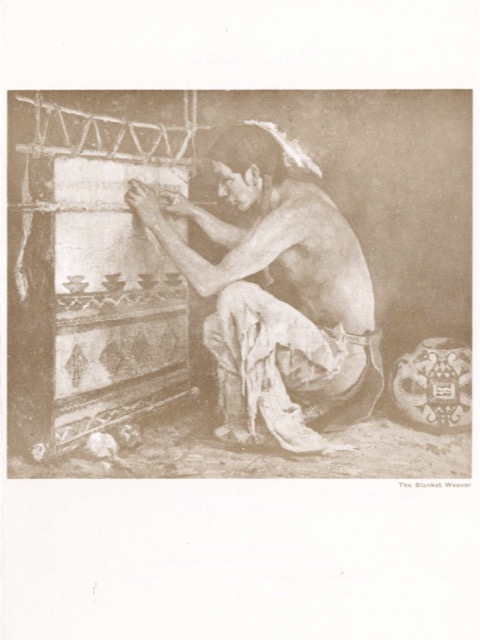 Click image to download a 1.4-MB PDF of this menu.
Click image to download a 1.4-MB PDF of this menu.
Couse was considered a fine artist of the Taos school, but like many fine artists he often did similar paintings of popular subjects for the collectors’ market. For example, a quick search of the web turns up a half a dozen different blanket weaver paintings, in all of which the weaver is crouching or sitting with, in most cases, a large pot behind him. To add to the sentimentality and thus the marketability of the painting, two of them have children.
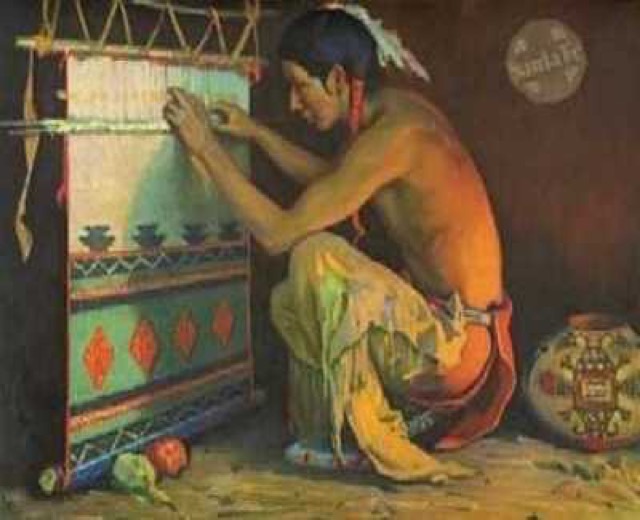
This shows the menu painting in color as depicted on Santa Fe’s 1932 calendar. A Santa Fe marketing employee no doubt added the logo in the background. On the calendar, the Santa Fe called it “Hopi Weaver” but the back of the menu calls the painting “Indian Weaver.”
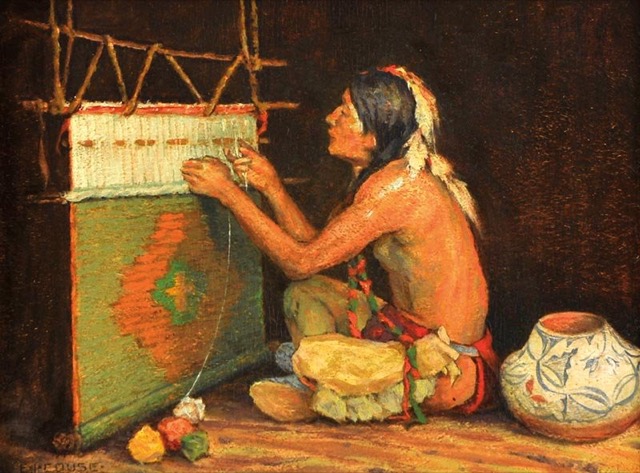
This is almost exactly the same pose except the Indian is sitting instead of crouching. Judging from the slightly crude nature of the painting, this might be a study for the very similar painting below.
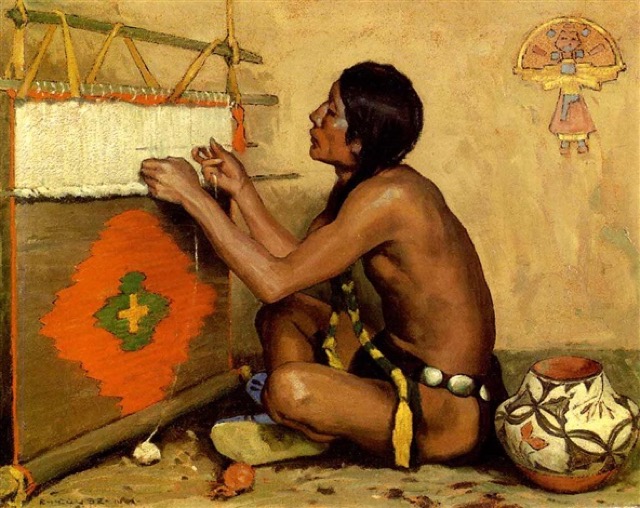
The painting below was used on a 1918 Santa Fe calendar. Notice there is a thunderbird painted on the wall behind the Indian. Unlike the Santa Fe logo, the bird was probably painted there by Couse as a Kachina doll design is in the same position on the previous painting.
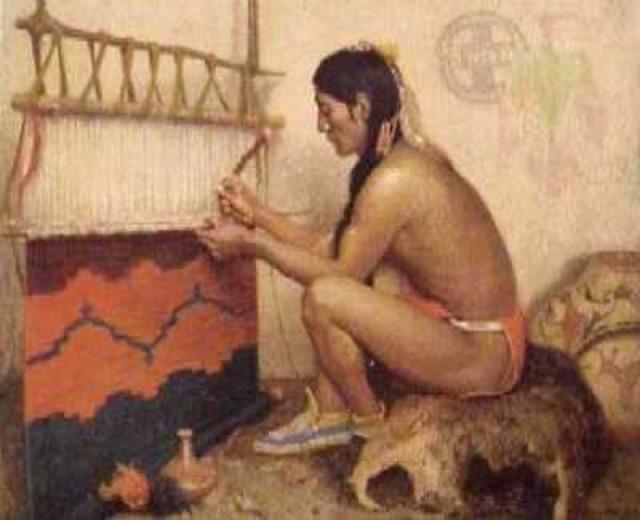
In 1914, Couse painted this version with a young child playing with yarn behind the weaver.
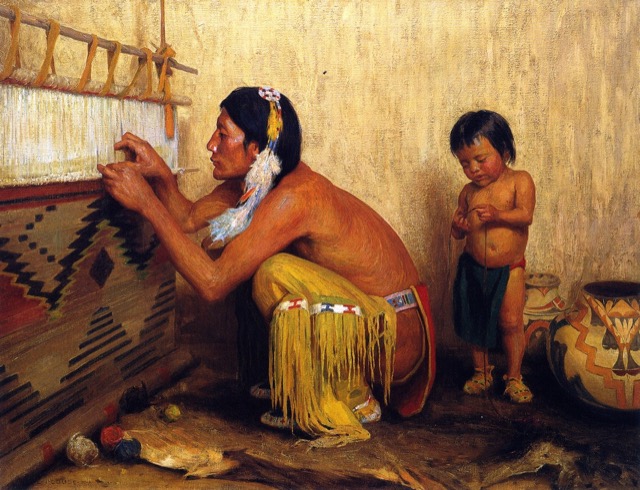
In 1923, Couse painted “The Lesson” showing what appears to be the same weaver teaching an older child (or possibly the same child a few years later) how to weave. (It is possible that the same weaver is the model for all of these paintings.)
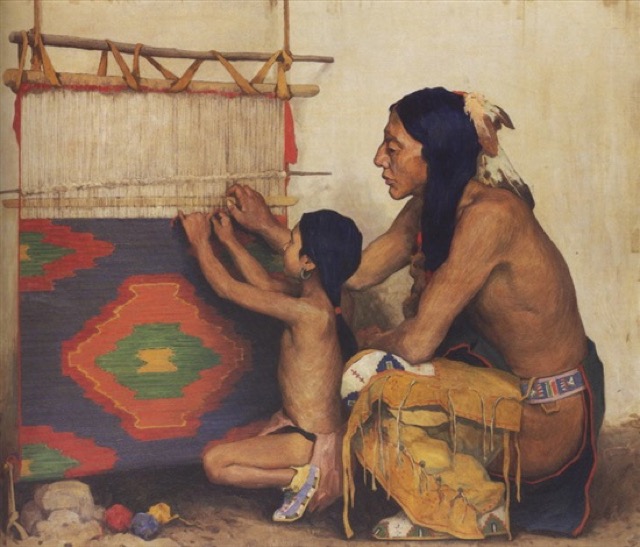
Finally, here is the only Couse blanket weaver painting I’ve seen in which the loom faces the artist rather than is at an oblique angle.
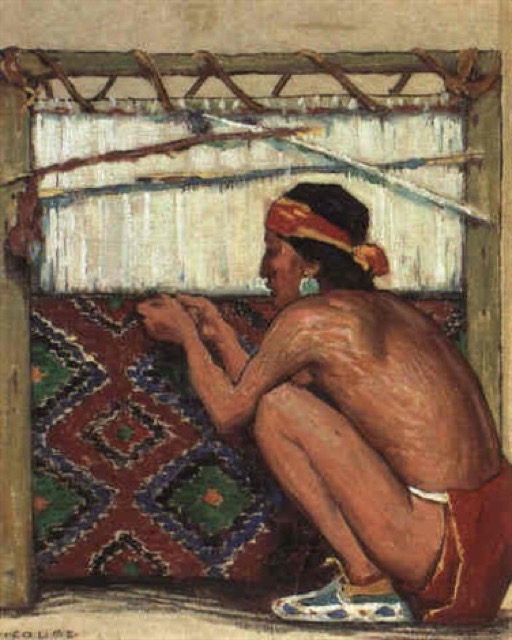
Interestingly, most actual blanket weavers that I’ve met are women, yet Couse painted only men doing the weavings. Perhaps this was a subtle hint that Southwest Indians were industrious rather than hostile, something that might have been a concern to potential tourists shortly after the turn of the twentieth century.
